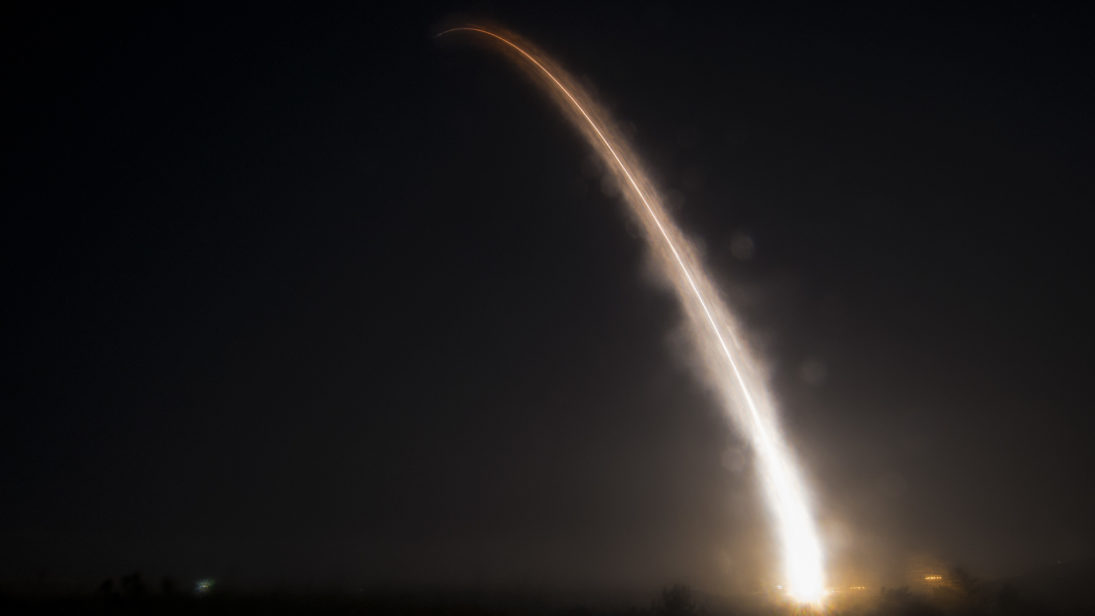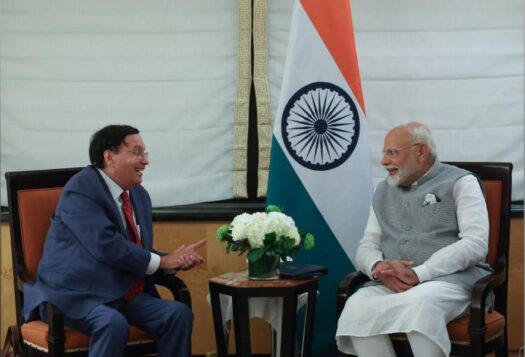
The Start of a New Race for Nuclear Superiority?
Over the past 72 years, India and Pakistan have fought three full-scale wars and had multiple border skirmishes and military stand-offs. Even after the overt nuclearization of these South Asian neighbors their international political competition still persists in the form of conflicts, crises, and sub-conventional actions. The India-Pakistan bilateral relationship hit a low-point this year with threats of escalation after Pulwama and the recent events in Kashmir. Against this backdrop, both countries, while being cautious, are also looking for new strategies to inflict punishment on each other.
The India-Pakistan bilateral relationship hit a low-point this year with threats of escalation after Pulwama and the recent events in Kashmir. Against this backdrop, both countries, while being cautious, are also looking for new strategies to inflict punishment on each other.
India and Pakistan’s nuclear weapons programs loom in the background of any crisis between the two countries. Evidenced by the continued modernization of nuclear forces, both countries place great importance in maintaining a technological edge and nuclear superiority. Nuclear theory has often pointed to a state’s level of resolve and willingness to assume and manipulate risk in a crisis victory. Some schools of thought, for instance, argue that regardless of the balance of forces, the possession of second-strike capabilities alone is enough to manipulate nuclear risk and “win” in a crisis. However, as prominent nuclear scholar, Matthew Kroenig, has argued, nuclear superiority can indeed improve a nuclear state’s prospects for victory in a crisis with another nuclear state.
In his 2013 paper, Nuclear Superiority and the Balance of Resolve, Kroenig lays out a case for how nuclear superiority can impact the balance of resolve and consequently increase the likelihood of a state’s victory against a nuclear-armed adversary. According to Kroenig’s analysis, the state that has nuclear superiority should possess greater bargaining power because it possesses greater force. The country with nuclear superiority is more willing to take risks and remain in a state of crisis for longer (i.e. exhibit a higher resolve), therefore, making it more likely to win during a nuclear crisis. Alternatively, for the country with nuclear inferiority, the higher cost of a catastrophe outweighs gains it can achieve through escalation.
Kroenig’s study is evidenced by the International Crisis Behavior (ICB) data set, from which Kroenig uses 52 nuclear crises dyads with 20 unique nuclear crises from 1945 to 2001, four of which were from South Asia. Since the 2001 Indian Parliament attacks, the latest India-Pakistan crisis in Kroenig’s data set, India and Pakistan have been caught in multiple escalatory crises, and it is worthwhile to trace how well the relationship between nuclear superiority and victory has held between the South Asian neighbors.
Extending Kroenig’s Analysis to South Asia: Classifying Victory
In a time of escalating tensions, and an ever-fluctuating nuclear balance between India and Pakistan, the connection between nuclear superiority and crisis victory may be more tenuous in South Asia today than earlier data suggests.
The time frame of the earlier ICB dataset primarily captures the nuclear crises of the Cold War era leaving out the post-2001, more frequently occurring and arguably less restrained encounters, between India and Pakistan. One indicator of this decrease in restraint, for instance, is the fast-growing number of ceasefire violations across the de-facto Kashmir border since 2013. These recent incidents of crisis escalation signal a new appetite for imposing costs on each other, and may have potentially renewed a competition in risk-taking behavior.
Secondly, Kroenig’s coding classifies outcomes as dichotomous variables: either victory or defeat (which can include anything from a compromise, stalemate, and outright defeat). The ICB classifies victory as an actor achieving its “basic goals.” While rigorously calculated, these codifications may be more subjective and contested in recent India-Pakistan crises. An example of this is the case of the Indian Parliament attacks of 2001, which are coded as a victory for India in the ICB database. However, this could be coded as a defeat or only a partial victory because India failed to force Pakistan to take decisive steps in punishing the terrorist groups responsible for the attacks, leading to future attacks by terrorist groups allegedly supported by the Pakistani government.
The classification of victory is further distorted for recent conflicts where each side has rigorously claimed that they have won. These diverging narratives were prominent in the aftermath of the Uri attacks as India claimed to have successfully launched a surgical strike, while Pakistan refuted its existence.
The classification of victory is further distorted for recent conflicts where each side has rigorously claimed that they have won. These diverging narratives were prominent in the aftermath of the Uri attacks as India claimed to have successfully launched a surgical strike, while Pakistan refuted its existence. Moreover, in the aftermath of Pulwama, the Indian side claimed to have killed 300 terrorists at Balakot, while the Pakistani prime minister stated that the causalities were a total of 10 trees.
Post-2001 Crises in South Asia
Kroenig’s framework can extend to nine nuclear crises from 1998 to 2016 in South Asia, which meet the ICB data set criteria of a dispute that “threatens at least one state’s values, has a heightened probability of military escalation, and has a finite time frame for resolution.” Many of these crises are included in the 2015 ICB dataset. This analysis also considers four additional crises which are either not included in the latest ICB dataset or fall out of its time scope, however, meet the ICB criteria for being included as a crisis point. The Mumbai attacks of 2008 have been coded as a crisis point in other sources, and the 2013 border skirmishes were considered the “worst bout of fighting in the region in nearly 10 years,” with threats of escalation from both sides. Both the Pathankot and Uri attacks also met the criteria defined in the ICB database. However, post-2016 crises are complicated to code as a success or a failure under these strict criteria and hence are not included.
In this simplified analysis, an assessment is made about which country possesses nuclear superiority by using the nuclear weapon equivalents estimates (NWEs). NWEs are used to avoid underestimating nuclear weapons capabilities since nuclear arsenals are generally decoupled from delivery systems in South Asia. These NWEs are available from several sources (including the Institute for Science and International Security for 1998, 1999, 2000-2005, India for 2014, Pakistan for 2014, and the work South Asia: Conflicts of South Asia for 2008) and are based on the weapons-grade fissile material production capacity of the country’s nuclear facilities. Data beyond 2014 is not yet available; therefore, it is uncertain which side has a projected nuclear advantage.
Similar to Kroenig’s methodology, when point estimates for NWEs are missing for a year, this analysis assumes that that there is a steady growth rate of the arsenals. Missing yearly data is calculated by using the difference in arsenal size and then dividing by the number of years between estimates. While these estimates are not precise, they provide a reasonable estimate of the relatively larger nuclear weapon strength that either India or Pakistan possesses at a given point in time. Notably, this analysis does not separate many of the control factors that Kroenig accounts for in his regression analysis.
Lastly, this analysis is like Kroenig’s in that it classifies outcomes as victory, but further breaks down defeat into the other ICB dataset components: compromise and stalemate. The results are summarized in Table 1:
Preliminary Findings and Analysis
Although still nascent, this analysis helps derive some basic insights on the relationship between nuclear superiority and crisis victory in South Asia. India possessed nuclear superiority from 1998 until mid-2007. During this period, it had four crises with Pakistan, out of which it only emerged victorious in two and suffered a defeat in the other two. India also won one crisis in 2016 (Uri attacks) even though it possessed a nuclear disadvantage. This does not indicate a strong link between nuclear advantage and crisis victory. Notably, this claim relates only to Kroenig’s first hypothesis. Kroenig’s second hypothesis that “the greater the state’s level of nuclear superiority the more likely it is to win in a crisis,” is a hard claim to test in the South Asia since the relative level of superiority has been less varied, making this hypothesis less applicable to this particular set of nuclear armed adversaries.
Pakistan’s nuclear superiority also did not make a Pakistani victory more likely. In fact, most of the crises since mid-2007 have resulted in either a stalemate or compromise for Pakistan. While a significantly smaller data set, the crises outcomes suggest the need to look at additional factors that may shape crisis “victory” in South Asia or even reconsider what the concept of victory is in this context and how it might be different from the coding used in the ICB data set. In South Asia, other factors beyond nuclear superiority likely shape a state’s resolve to escalate.
Pakistan’s nuclear superiority also did not make a Pakistani victory more likely. In fact, most of the crises since mid-2007 have resulted in either a stalemate or compromise for Pakistan.
One such factor could be the development of nuclear technologies that can impact the nuclear advantage in terms of improving the quality of the capabilities available as opposed to the quantity. Kroenig predominately looks at nuclear superiority in a quantitative sense; whereas, the past 15 years in South Asia have seen a focus on an array of nuclear technologies (e.g. the pursuit of tactical nuclear weapons and Ballistic Missile Defense systems). These technologies could impact a state’s perceived likelihood of using nuclear weapons – and a state’s perceived level of resolve in a conflict – and have broader consequences for the strategic stability of the region.
Development of emerging and disruptive technologies (i.e., artificial intelligence and cyber technologies) can similarly impact deterrence calculations by altering the perceived balance of risk. Disruptive technologies might increase the amount of risk countries are willing to bear and increase their level of resolve and their perceptions about the resolve of their nuclear adversary.
Conclusion
Classifying “victory” or “defeat” in South Asia appears increasingly difficult given competing narratives and mutual claims of “victory” by India and Pakistan after a crisis. As each side attempts to change the balance of forces and resolve, it is important to revisit questions of nuclear superiority in the South Asian context. Further research should examine the role of emerging technologies in deterrence calculations as well as the role contextual factors may play in making it increasingly difficult to claim a “victory” in South Asia.
Editor’s Note: In an ongoing series aimed at bridging the divide between policy analysis and academic scholarship, SAV contributors review recent articles and books published by leading scholars to evaluate the latest theoretical and analytical debates on strategic issues and their implications for South Asia. Read the series here.
***
* Unclear assessment of whether this is a compromise or a defeat because India’s approach to this crisis point was criticized for being prone to operational blunders that raised doubts about how successful the immediate action was against the organizations and individuals in Pakistan responsible for and linked to the attack. There was no clear indicator of the extent of Indian success in prosecuting and punishing the suspected terrorists linked to the attack who were allegedly operating from Pakistan and doubts have also been raised about how effective they have been in countering the drivers for these kinds of attacks in the long run.
** This is marked either a victory or a compromise because while the Indian side responded heavy handedly by undertaking a “surgical strike” on Pakistan, the Pakistani narrative completely denied this occurred.
Image 1: U.S. Strategic Command


